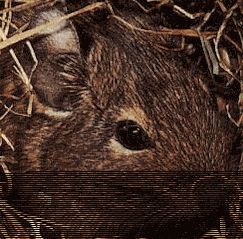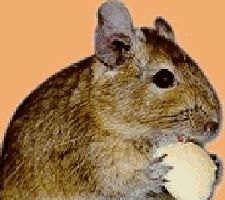Attention
perch their character much onlooker pu to become much dangerous one
in the moment in which large animals find themselves of forehead
devout, like the cats. In fact the Degus does not have fear of the
cat and cos they will not try to scappare and from the other side
the cat to believe to find itself of forehead to a rat... you will
imagine all like andr ending! Therefore fairies not to enter animals
of this type in the room in which a Degu finds itself. The Degus are
erbivori animals. In nature nutrono of plants, bulbs, leaves and
coppers. Tried to nourish them in this way. You remember yourselves
that the Degus cannot absolutely eat no type of sugar, moreover
avoided of dargli too many carbohydrates and fat people, otherwise
ammaler. SUGGESTED BREEDINGS by MENANDPETS.COM
No breeding to signal
1) DRY MANGIME THE DEGUS


The Latin name of
Degus OCTODON DEGUS.
E' much difficult one to see them from
alive in nature perch the their earth of origin Chile.
Like many
mammalian and roditori small that live in libert they are preda easy
of other animals. Moreover they are victims also of numerous
diseases and velenose substances immesse in their atmosphere from
the man. Therefore, in libert the Degus they do not live very,
indeed to the maximum they can survive 2-3 years. Instead in
cattivit they exist Degus that has caught up veneranda ET of 9 years
(than devout or less they correspond to 100 and passes human years).
In average our Degus years can survive 6-9.
The important factor
devout that the DIET conditions theirs longevit.
The Degus other
colors are of the roditori with a fur brown (are rare to see) and
with a long tail that finishes with a forelock of hairs.
When
they walk they hold raised the tail with fierezza and when they
scramble up they use it in order to balance itself. They are similar
the gerbili very, solos that are a po' devout large. A lot often
comes callsalso chinchilla' dwaries to you. In order to understand
to us better, a degu has the same dimensions of a small porcellino
of India. The dentini two weeks become orange after the birth
because of the reaction between theirs salted and the chlorophyll of
the plants that eat.
LENGTH BODY 25-31 cm
LENGTH TAIL 7,5-13 cm
WEIGHT 170-300 gr.
HOW MANY YEARS
LIVE? 5 (in cattivit)
DURATION GESTATION 87-93 days
NUM.
SONS 3-9 (medium 4)
if you want to know like signaling yours,
contacts: marketing@inseparabile.it
MENU
FOR YOUR DEGU:
-
pellets for chinchilla' or porcellini of India
- mangime for
roditori
2) HAY (to volont)
3) GRASS (for all the year
except of winter)
Raccoglietela close to the roads perch it
could not be polluted.
4) VERDURE (not every day perch could
cause diarrhoea)
- lattuga, carrots, cauliflowers, water-melon,
broccoli, tomatoes or other verdure that can appeal to to your degu.
5) GOLOSITA' (one or two times to week)
- carrots sand banks
(do not contain much sugar!!!)
- sunflower seeds
- a
pezzettino of apple
- walnuts
Moreover in order to avoid
that the dentini of the degus they grow too much it must dargli also
of the rods rosicchiare. Occasionally dategli of the containing
tablets Soccer that you can buy in the storees of animals.
Finally you must make so that your degus always have to
disposition of the fresh water. You council to use a birdcage tray.
Changed to the every water day in order to avoid whichever type of
infection
we thank the sig.
Gianfilippo Fars for the realization of this card